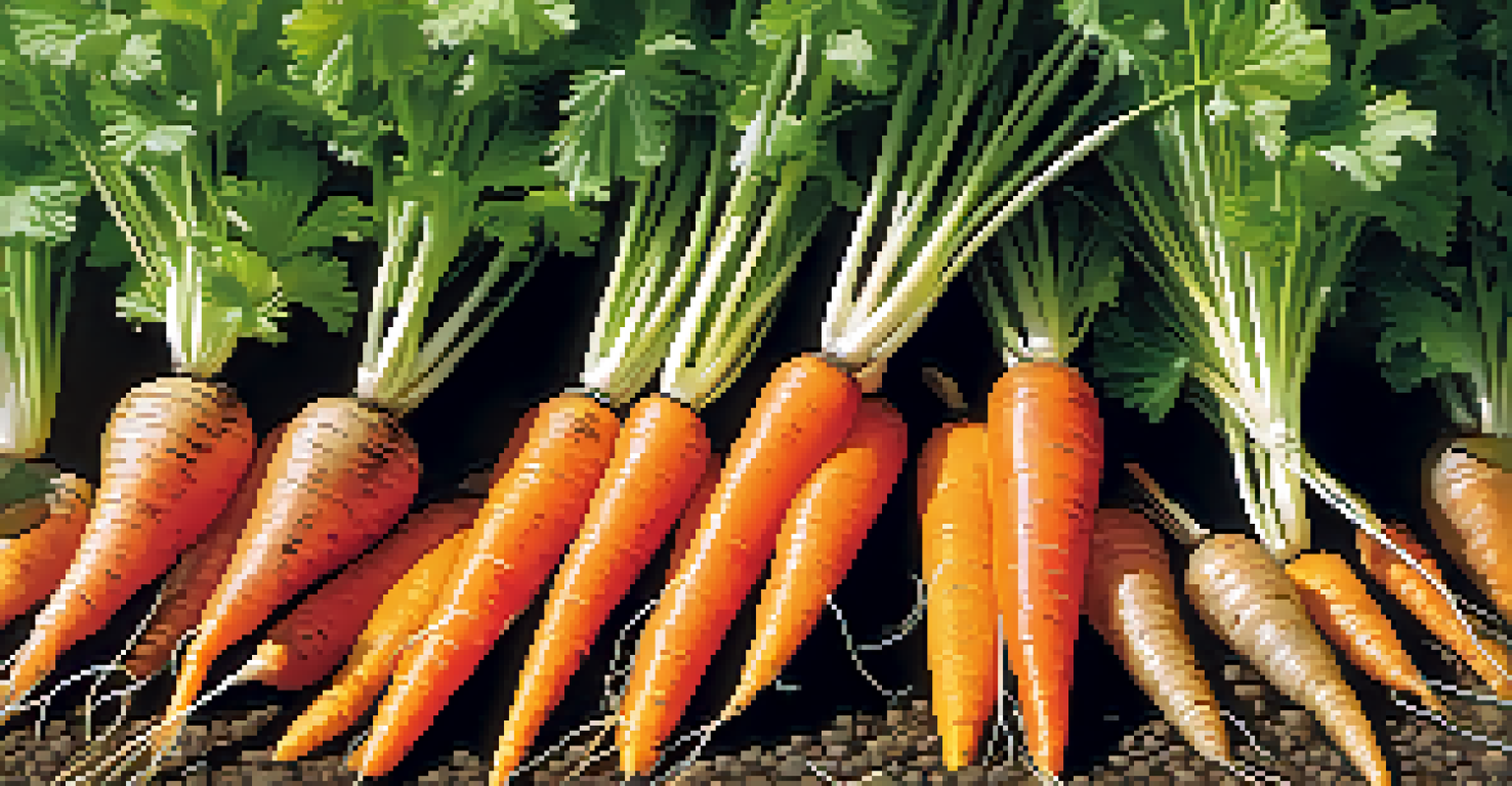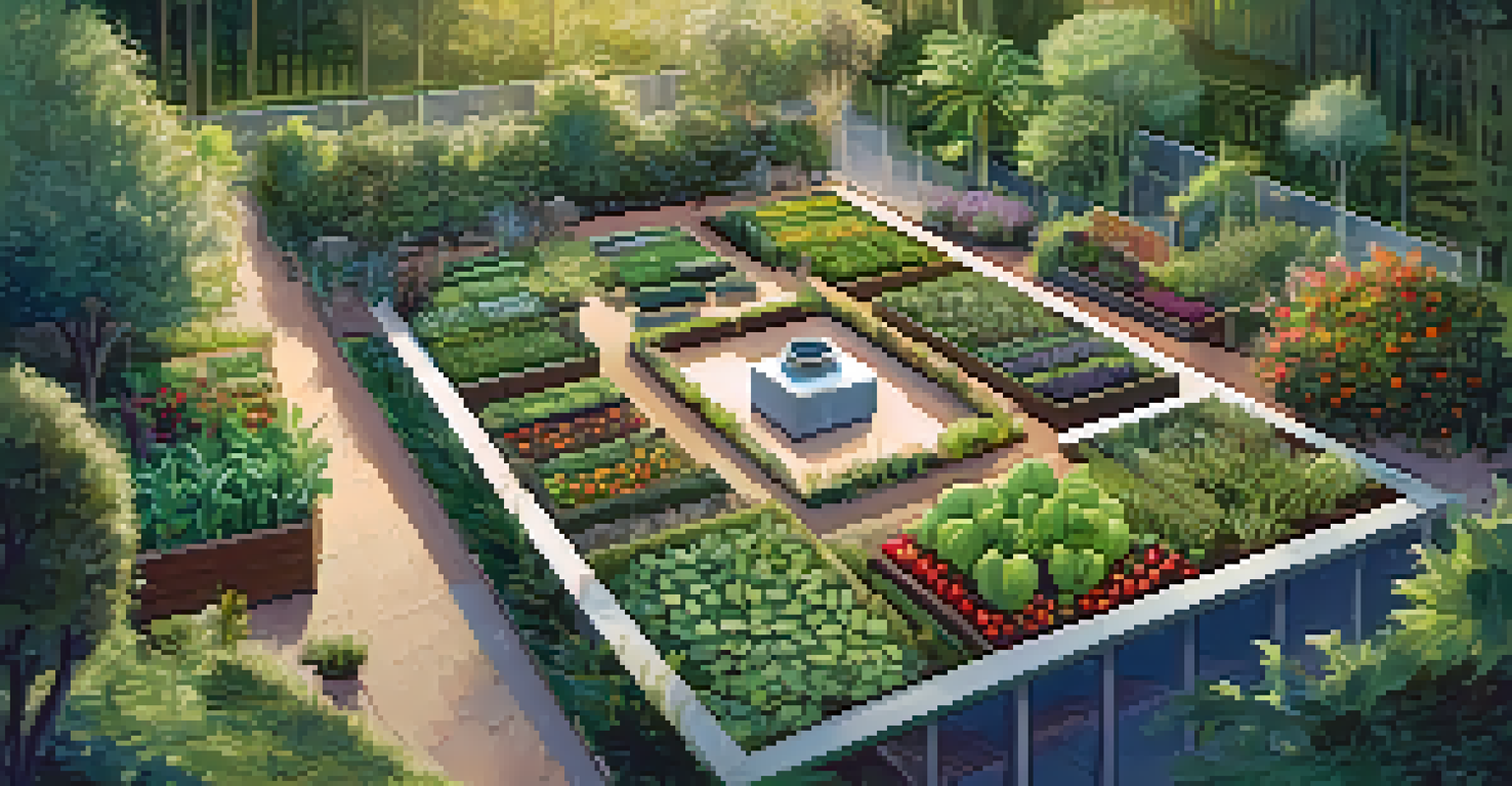Permaculture and Companion Planting: A Synergistic Approach

Understanding Permaculture: A Sustainable Gardening Philosophy
Permaculture is a holistic approach to gardening that mimics natural ecosystems. It focuses on creating sustainable environments by integrating plants, animals, and people in a way that benefits all. By observing nature and its patterns, permaculture aims to enhance biodiversity and reduce waste, fostering a self-sustaining system.
The greatest threat to our planet is the belief that someone else will save it.
At its core, permaculture emphasizes the importance of working with nature rather than against it. This means utilizing natural resources efficiently and creating a balance that allows all elements to thrive. By understanding how different species interact, gardeners can design spaces that are resilient and productive.
For instance, a permaculture garden might include a variety of plants that support each other’s growth, such as legumes that fix nitrogen in the soil. This interconnectedness not only enhances the health of the garden but also reduces the need for chemical fertilizers and pesticides, making it a healthier choice for both the environment and gardeners.
What is Companion Planting and Its Benefits?
Companion planting involves strategically placing different plants together to enhance growth and deter pests. This age-old practice understands that some plants can benefit others through their natural characteristics, creating a harmonious garden ecosystem. For example, marigolds are often planted alongside vegetables to repel harmful insects.

Not only does companion planting promote healthy plant growth, but it also maximizes space and productivity in gardens. By grouping compatible plants, gardeners can create microenvironments that enhance nutrient uptake and optimize sunlight exposure. This method allows for a diverse garden that yields more produce.
Permaculture Mimics Natural Ecosystems
Permaculture emphasizes creating sustainable environments by integrating plants, animals, and people in harmony with nature.
Additionally, companion planting can reduce the need for chemical interventions. By naturally deterring pests and improving soil health, gardeners find that their gardens thrive with fewer inputs. This shift toward organic practices is not only beneficial for the garden but also aligns with the principles of permaculture.
The Synergy of Permaculture and Companion Planting
Combining permaculture and companion planting creates a powerful synergy that nurtures both the plants and the environment. By applying the principles of permaculture to companion planting, gardeners can design spaces that are not only productive but also sustainable. This approach embraces the idea that every element in the garden plays a vital role in supporting the whole.
The future will be green, or not at all.
For instance, growing a mix of herbs, flowers, and vegetables together can enhance the garden's resilience. Certain herbs, like basil, can improve the flavor of tomatoes while also repelling pests. This cooperative dynamic showcases how permaculture principles can elevate the benefits of companion planting to new heights.
Moreover, the diverse plant combinations foster a rich ecosystem that attracts beneficial insects and microorganisms. This diversity leads to healthier soil and plants, ultimately creating a garden that thrives through natural relationships. By understanding these connections, gardeners can cultivate a flourishing ecosystem that benefits everyone involved.
Selecting Companion Plants for Your Permaculture Garden
Choosing the right companion plants is crucial for a successful permaculture garden. It’s essential to select plants that will support each other’s growth, whether through pest deterrence, nutrient sharing, or shade provision. Researching plant families and their interactions can guide you in making informed choices that benefit your garden.
For example, planting carrots alongside onions can deter carrot flies, while beans can enhance soil fertility for corn. Additionally, incorporating flowers like nasturtiums can attract pollinators and beneficial insects, making them a valuable addition to any garden. The key is to create a balanced environment where plants can thrive together.
Companion Planting Enhances Growth
Strategically placing compatible plants together promotes healthy growth, maximizes space, and reduces the need for chemical interventions.
As you experiment with different combinations, keep track of what works and what doesn’t. Over time, you'll develop a deeper understanding of your garden's unique ecosystem. This ongoing observation and adjustment embody the permaculture philosophy of working with nature to create a self-sustaining environment.
Practical Steps to Implement Companion Planting
Implementing companion planting in your garden doesn’t have to be overwhelming. Start small by selecting a few pairs of plants that work well together, and gradually expand as you gain confidence. Begin by mapping out your garden and considering the sunlight and space each plant will need.
Next, consider planting flowers among your vegetables to attract beneficial insects. For example, planting dill near cabbage can help control pests while also providing a habitat for pollinators. This integration of flowers not only beautifies your garden but also enhances its productivity.
Finally, maintain a flexible mindset. Gardening is a learning process, and not every combination will yield the desired results. By observing how plants interact over time, you’ll be empowered to make adjustments and optimize your garden based on real-life experiences.
Challenges of Companion Planting and How to Overcome Them
While companion planting offers many benefits, it’s not without its challenges. One common issue is the potential for competition among plants for resources like water and nutrients. It’s important to carefully consider the needs of each plant and their compatibility to mitigate this risk.
Another challenge can arise from the unexpected reactions between certain plants. While some pairings thrive, others may hinder each other's growth. Keeping a garden journal can help track these interactions, allowing you to make informed decisions for future planting.
Synergy of Permaculture and Plants
Combining permaculture with companion planting fosters diverse ecosystems that support plant health and resilience.
Ultimately, patience and observation are key. Every garden is unique, and understanding the specific dynamics of your space will lead to success. Embrace the journey of experimentation and adjust your strategies as you learn what works best in your companion planting endeavors.
The Future of Sustainable Gardening: Embracing Permaculture
As we face increasing environmental challenges, the principles of permaculture and companion planting offer a sustainable path forward in gardening. By embracing these practices, gardeners can contribute to biodiversity and create ecosystems that support life. This approach transcends traditional gardening methods, emphasizing harmony and sustainability.
Moreover, the growing interest in organic and sustainable practices reflects a shift in consumer preferences. People are more aware of where their food comes from and the impact of conventional agriculture on the environment. Permaculture and companion planting not only address these concerns but also promote a healthier lifestyle.

By integrating these methods into our gardening practices, we can foster a deeper connection with nature and cultivate spaces that are beneficial for both humans and the planet. The future of gardening lies in understanding and respecting the intricate relationships within our ecosystems, and permaculture provides the perfect framework for this transformation.